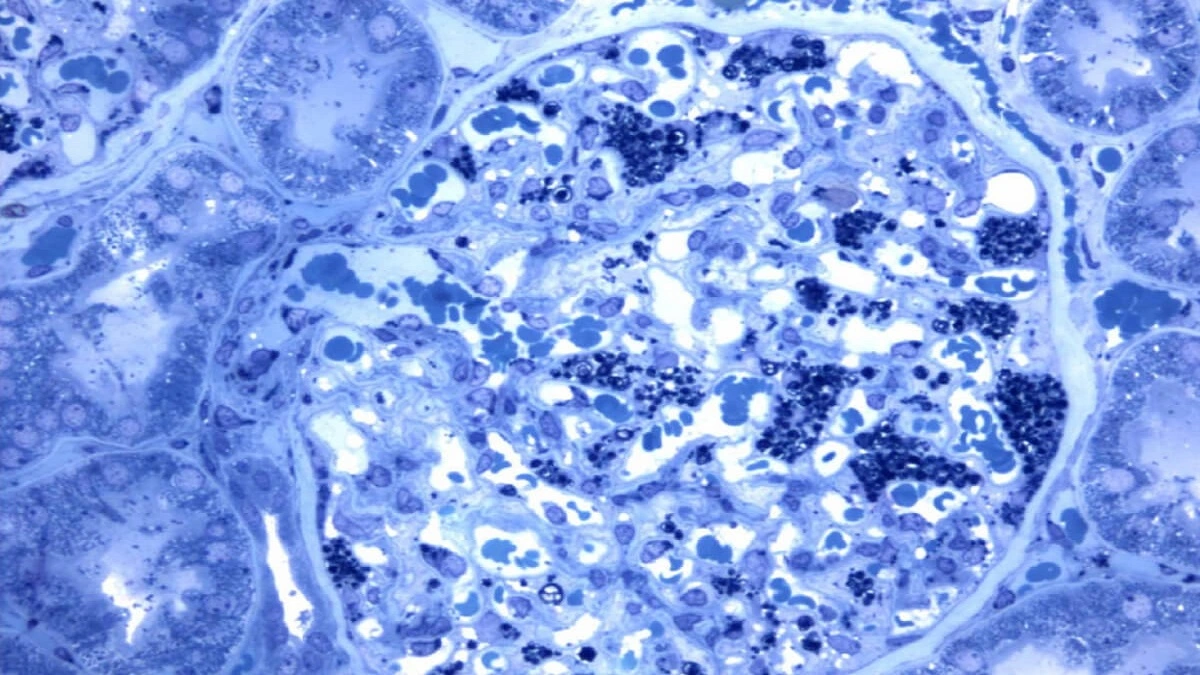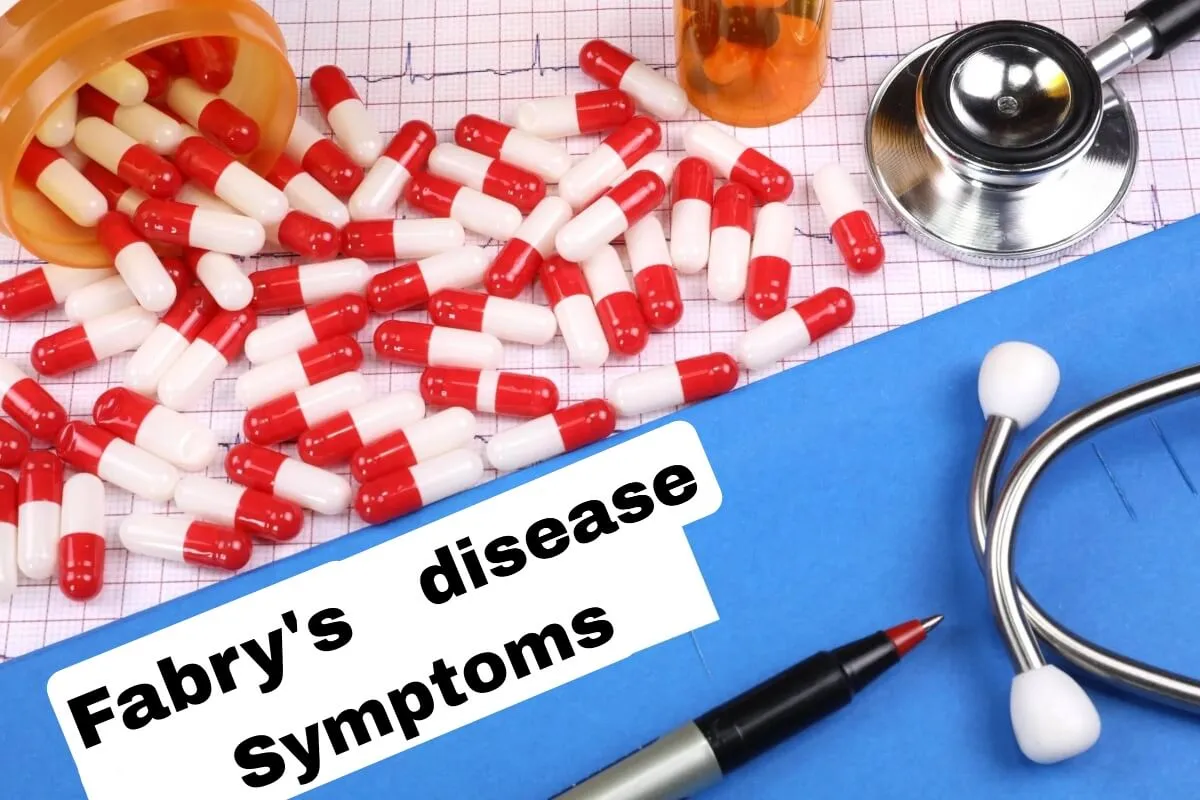Fabry’s disease is an inherited neurological disorder that occurs when the enzyme alpha-galactosidase-A cannot efficiently break down fat-containing materials known as lipids into smaller components that provide the body with energy. Starting in childhood, this buildup causes symptoms. Which affects many parts of the body. People who are affected by this disease do not have enzymes that break down lipids or fats. These fats collect in the blood vessels and tissues, which also increases the risk of heart attack and kidney failure.

Table of Contents
What is Fabry’s disease?
Fabry disease, also known as Anderson-Fabry disease, is a rare genetic disease that can affect many other parts of the body, including the kidneys, heart, and skin. The genetic mutation that is the main cause of the disease interferes with the function of an enzyme that processes biomolecules known as sphingolipids, leading to a build-up of these substances in the blood vessels.
Symptoms of Fabry disease
The symptoms of this disease depend on how severe the condition is. and which parts of the body are affected. Common symptoms of this disease include the following:
- episodes of pain in the hands or feet
- reduced sweating
- Dizziness
- flu-like symptoms including fatigue fever and body aches
- Deafness
- skin rash
- stomach problems
- kidney damage
- heart complication
- Blurring in the front part of the eye.

When should a person with Fabry disease see a doctor?
A person with Fabry disease should see a doctor regularly to monitor their condition and manage any symptoms or complications. If you have more symptoms than symptoms in front of this disease, then you should contact your health care provider and get treatment for this disease. This disease can be treated regularly.
How common is Fabry disease?
About one in every 40,000 males has classic Fabry disease. Late onset or atypical Fabry disease is more common. It affects about one in every 1500 to 4000 males. There is no definite diagnosis of this disease in women. Some women do not have symptoms or have mild easily eliminated symptoms, so the condition is often undiagnosed in women.
Type of Fabry disease
The types of the disease reflect a person’s age when symptoms first appear. Types of this disease include the following:
- Classic type: Symptoms of this type of disease appear in childhood or adolescence. A hallmark disease symptom, a painful burning sensation in the hands and feet, may be noticeable as early as age 2. Symptoms get progressively worse over time. That’s why they should be treated.
- Atypical: In people with the atypical type, symptoms do not appear until they are 30 years of age or older. The first sign of a problem may be kidney failure or a heart attack.
Due to Fabry’s disease
- Fabry’s disease is a rare genetic disorder that results in a build-up of a fatty substance called globotriaosylceramide in various organs and tissues throughout the body, including the kidneys, heart, and nervous system.
- Symptoms of this disease can vary depending on the severity of the condition, but they often include pain and numbness in the hands and feet, skin rashes, hearing loss, and vision problems.
- In some cases, the disease can lead to more serious complications, such as kidney failure, heart disease, and stroke.
- Treatment for this disease usually involves enzyme replacement therapy to help break down the build-up of fatty substances in the body. Other treatments may include medications to manage symptoms and regular monitoring to prevent or detect potential complications.

Fabry disease prevention
Fabry disease is a genetic disorder that is inherited in an X-linked pattern, meaning that it is caused by a mutation on the X chromosome. As such, it cannot be completely prevented, but several steps can be taken to manage the condition and reduce the risk of complications:
- Genetic counseling: Individuals who have a family history of Fabry disease may benefit from genetic counseling to assess their risk of developing the condition and to discuss family planning options.
- Early diagnosis: Early diagnosis and treatment can help manage symptoms and prevent or delay the onset of complications associated with the disease.
- Enzyme replacement therapy: Enzyme replacement therapy is a treatment option that may help reduce the build-up of fatty substances in the body and stop or slow the progression of the disease.
- Regular monitoring: Regular monitoring of kidney function, heart function, and other organ systems can help in the early detection of any potential complications and allow early intervention.
- Lifestyle changes: Improving overall health by making lifestyle changes such as eating a healthy diet, getting regular exercise, and avoiding smoking and excessive alcohol consumption can help reduce the risk of complications associated with the disease.

Fabry disease treatment
There is currently no cure for the disease, but several treatment options are available to manage symptoms and reduce the risk of complications:
- Enzyme replacement therapy: ERT is a treatment option that involves intravenous infusion of a synthetic version of the missing enzyme alpha-galactosidase A. The synthetic enzyme may help break down the build-up of fatty substances in the body, which may slow or stop the progression of the disease and reduce the risk of complications.
- Chaperone therapy: This treatment option involves oral medications that help stabilize the faulty enzyme, allowing it to work more effectively at breaking down fatty material buildup.
- Pain management: Pain is a common symptom of this disease, and there are many options for pain management, including over-the-counter pain medications, prescription medications, and nerve blocks.
- Symptom-specific treatments: Other treatments may be used to manage the specific symptoms of the disease, such as medications for gastrointestinal problems, skin rashes, and blood pressure control.
- Regular monitoring: Regular monitoring of kidney function, heart function, and other organ systems can help in the early detection of any potential complications and allow early intervention.
- Lifestyle changes: Making lifestyle changes such as eating a healthy diet, getting regular exercise, and avoiding smoking and excessive alcohol consumption can help improve overall health and reduce the risk of complications associated with the disease.
See also
Pyorrhea: Types, Causes, Symptoms & Treatment
Vulvar Cancer: Symptoms, Cause, and Treatment Options
Mouth Cancer: Symptoms, Risk Factors, and Treatment Options
Bladder cancer: Types, Causes, Symptoms & Treatment
FAQ’s
-
What is Fabry’s disease?
Fabry disease is a rare genetic disorder that results from a build-up of a fatty substance called globotriaosylceramide in various organs and tissues throughout the body, including the kidneys, heart, and nervous system.
-
What are the symptoms of Fabry’s disease?
Symptoms of the disease can vary depending on the severity of the condition, but they often include pain and numbness in the hands and feet, skin rashes, gastrointestinal problems, hearing loss, and vision problems.
-
How is Fabry’s disease diagnosed?
The disease is diagnosed through a combination of physical examination, family history, and laboratory testing, including genetic testing and enzyme activity tests.
-
Is there any treatment for Fabry’s disease?
There is currently no cure for the disease, but several treatment options are available to manage symptoms and reduce the risk of complications.
-
What should a person with Fabry disease do if they experience new or worsening symptoms?
If a person with this disease experiences new or worsening symptoms, such as pain, numbness, skin rashes, or gastrointestinal problems, they should see a doctor to determine the cause and receive appropriate treatment.
-
What lifestyle modifications can help manage Fabry’s disease?
Making lifestyle modifications such as eating a healthy diet, getting regular exercise, and avoiding smoking and excessive alcohol consumption can improve overall health.

1 thought on “Fabry’s disease: Types, Causes, Symptoms & Treatment”